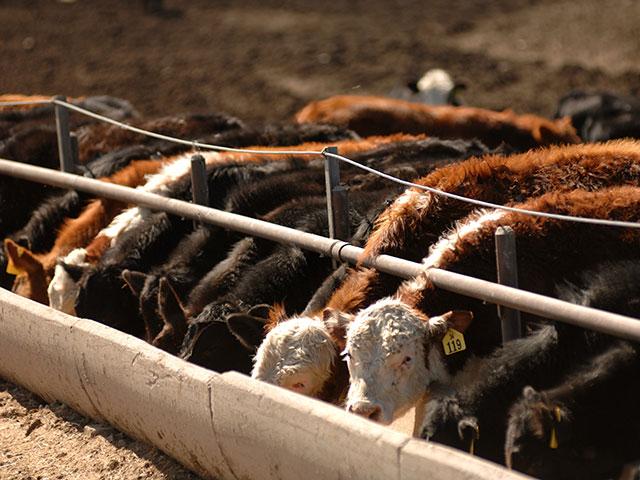Tight Feeder Numbers Driving the Market
Heifer Retention in 2023 Will Put More Pressure on Feeder Markets
Analysts who believe U.S. herd liquidation will continue through at least some of 2023 point to continuing high numbers of heifers on feed as a signal that producers aren't ready to step aggressively into herd rebuilding just yet.
Reasons for continued liquidation will be tied primarily to drought and/or its lingering effects, poor hay crops in 2022, expensive inputs, and limited profitability due to some or all of those factors. As the industry looks for USDA to release a new NASS Cattle Inventory report at the end of this month, early expectations are that we'll see another 3% to 4% reduction in beef cow numbers. But it's heifer numbers many marketers are following most closely, as this both signals producers' mindset about rebuilding, and directly affects feeder numbers and values through 2023.
Elliott Dennis, Extension livestock economist at the University of Nebraska, shared an example of a 100-head cow herd with a 90% breeding efficiency, where cows stayed in a herd on average about five years. He explained that based on average numbers in his state of Nebraska, a cow-calf producer would have sold about 20 cows out of the herd in 2022. To maintain long-term feeder cattle output, that producer would have to either retain 20 heifers to breed the coming year or buy females.
"Selling more heifer calves today will lower future feeder cattle production but increase operational income today. Whereas retaining more heifers will decrease current income while increasing future feeder cattle production," he wrote.
Dennis told DTN that looking at data for the past 10 years, discounts for feeder heifers compared to steers have averaged about $18 per cwt -- that's for a 600- to 699-pound heifer. He noted the higher discounts tend to be in the spring and summer, with lower discounts in the fall.
Feeder cattle production this year will be a result of both heifer retention and cull cow sale decisions made last year. The number of heifers held back in 2022 will primarily affect feeder cattle numbers in 2024.
P[L1] D[0x0] M[300x250] OOP[F] ADUNIT[] T[]
HEIFERS IN FEEDLOTS
At publication time, USDA-NASS numbers showed heifer replacements in feedlots (as a percentage of total cattle on feed) very high at 39.74%. Dennis noted this is the highest percentage seen since 2002, and it's an indicator that heifer replacements will decrease this year. He wrote that a change in heifer retention could show a 4% to 4.5% decrease in the upcoming report.
"The true extent of the rebuilding likely depends on the weather, overall beef demand, and input costs," he stressed. But based on current numbers, he wrote, the supply of feeder cattle will be down for 2023. He noted that fall 2022 deferred contracts trading in the $200 to $210 range supported that idea.
PRODUCERS STUCK IN THE MIDDLE
Dennis told DTN the way he sees it, producers today are stuck in a hard spot. Last year, with continued dry weather and feed at $300 to $350 per ton, the decision of whether to sell or hold back heifers in a market with rising feeder prices was pretty black and white.
"Many producers opted to sell and continue to liquidate rather than add the additional expenses of retaining heifers," he said. But he noted there is a strong sense of optimism moving into spring that the dry weather is behind the state's cattle producers.
"Looking at the weather factor, here in Nebraska, we've had three consecutive dry years. We've not had four consecutive dry years in over 100 years. So, we are betting against the average and saying this year will be more wet, that we'll have good pastures, and herds will rebound. If we have four consecutive dry years, it's a total fluke. So, we are looking at 2023 with some optimism."
REBUILDING STARTS WHEN?
Is there any possibility that the U.S. cattle producer will turn the corner into a rebuilding phase before 2024? Dennis told DTN there is no doubt at this stage that there will be a smaller U.S. beef cow herd in 2023.
"We are certain of that due to the significant culling that took place this past year," he said. "Most estimates have total beef cow herd size down 3.5% to 4.5% for 2023. I think that's what we'll see on the inventory report."
The pinch will be felt in a big way when it comes to feeder cattle supplies this year, he added. Assuming producers do start to retain heifers in 2023, that will only put more pressure on feeder supplies given the culling that has already taken place. He predicts feedlots will hold cattle longer on feed to get slaughter weights up to meet consumer demand.
Victoria Myers can be reached at vicki.myers@dtn.com
Follow her on Twitter @myersPF
(c) Copyright 2023 DTN, LLC. All rights reserved.






